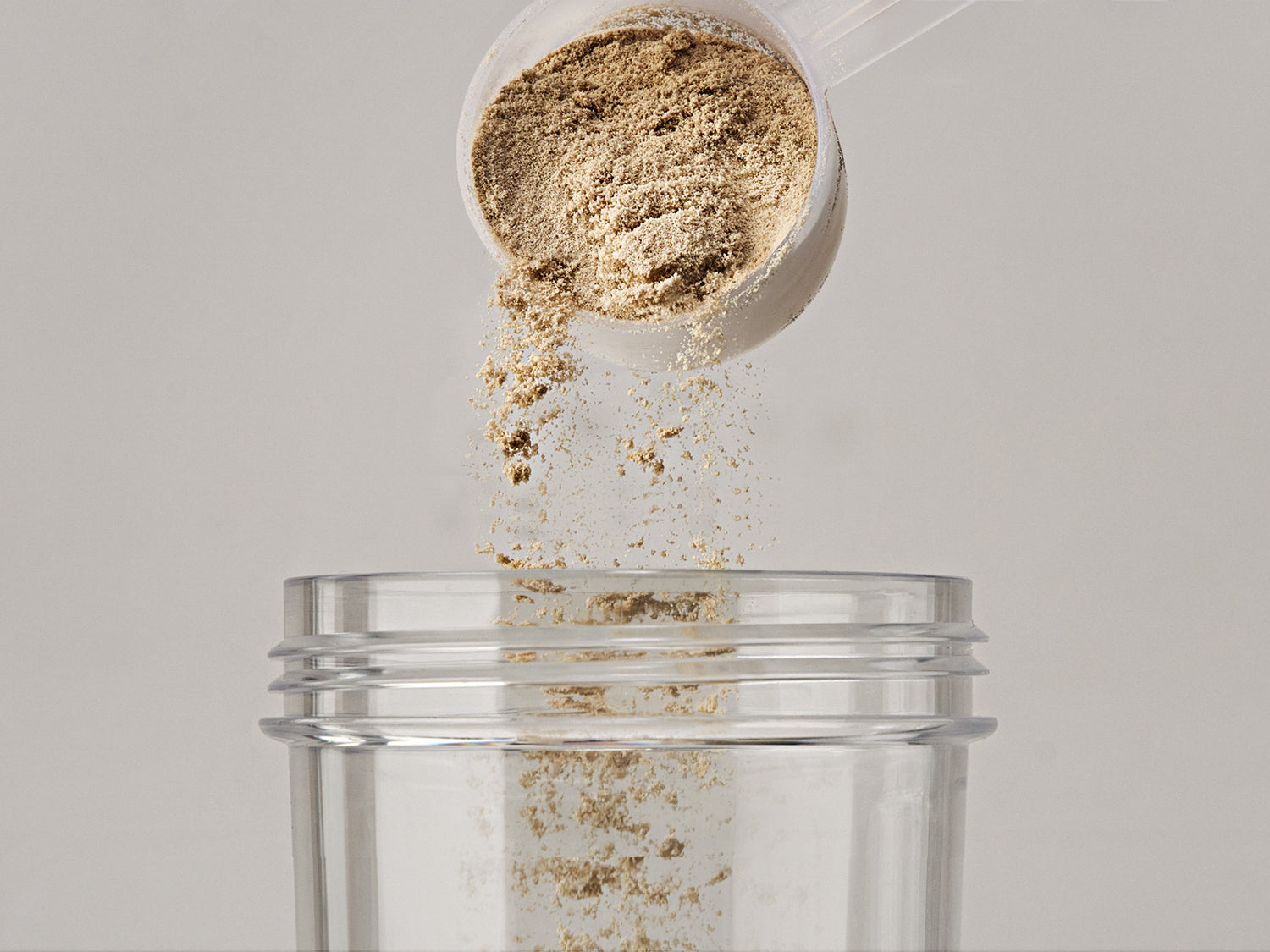MAKING THE GLYCEMIC INDEX WORK FOR YOU
Carbs are an important part of any musclebuilding diet. Sure, a lot of emphasis is put on protein when it comes to making gains, and rightly so! There’s very little left to say about the importance of protein for building muscle. However one could argue that carbohydrates can have at least as big an effect on muscle growth as protein. This is because carbs are the key to controlling a hormone in your body that is responsible for nutrient uptake and storage: insulin.
Table of content
Anabolic insulin
Insulin is actually a functional protein, and like all other proteins, it’s a chain of amino acids. This chain of aminos acts as a signaling mechanism, and after you consume carbs (or protein), insulin is released from the pancreas. This happens when blood glucose levels rise above 100mg/dl. Insulin enters the bloodstream and interact with muscle cells. Your muscle cells are lined with insulin receptors, and once an insulin molecule binds to the receptor, it signals the muscle cell to allow glucose, amino acids and creatine to enter the muscle. It also stimulates protein synthesis by directing ribosomes to make more protein, making it both anabolic and anti-catabolic.
Also Read: The Science Behind Betaine
As you can see, insulin is very anabolic for gaining muscle tissue, but it’s also very anabolic for gaining fat. You can say it’s indiscriminately anabolic. This is because insulin also binds with receptors on fat cells, where it signals the uptake of glucose just as it does with muscle cells.
Insulin also inhibits an enzyme called hormone-sensitive lipase, which is responsible for breaking down fat. Basically, if your insulin spikes frequently, you’re shutting down your body’s ability to catabolize fat.
Carbs and insulin spikes
So we’ve learned that insulin’s job is to shuttle most of the glucose in the blood by pushing it into muscle and fat cells. If you always think of insulin this way, as an anabolic transport hormone, you can manipulate it based on your current goal as a bodybuilder.
Also Read: Guide to Sugar Substitutes
So, unlike with protein, which is pretty much good at any time of day, any day, you can’t be quite as freewheeling with your carb intake. On one hand, lots of the right carbs at the right time can help you make all kinds of gains in new muscle, but on the other hand, the wrong carbs at the wrong time can be detrimental to your physique goals.
Because of its role as a fat-storage hormone, insulin levels that spikes at the wrong time are bad news for the state of your physique. Some people do it far too often by eating the wrong carbs (refined sugars/glucose/sucrose) at the wrong time (frequently throughout the day) over long periods of time (months and years), and end up with diabetes. In fact, until the last few decades, insulin used to be discussed only in regard to diabetes.
Also Read: Is Protein Shake Good for Breakfast?
For building muscle without building a whole lot of fat, the trick is eating the right carbs at the right time. As that implies, no, not all carbs are created equal. The types of carbs you eat can make or break your ability to manipulate insulin. For this purpose, carbohydrates can be categorized as having a high-glycemic index or a low glycemic index. Choosing foods, and in particular carbs, based on their glycemic index (GI) can help you fine-tune blood glucose management and ultimately give you great control over one of your body’s most anabolic hormones.
Introduction to the glycemic index
The glycemic index (GI) is a method of ranking the effects of different carbohydrate-rich based foods based on their effects on blood sugar. The GI compares foods with glucose in terms of their potential to raise blood glucose levels. The GI of a food is measured in a two-step process. To determine the GI of a food, researchers give a subject 50g of pure glucose and then measure their blood glucose levels over the course of several hours. This acts as the control. After, researchers give the same person 50g of the food in question and measure their blood glucose levels for several hours afterward. The blood sugar response to the food is then compared with the response to pure glucose.
Also Read: Whey Protein Vs Isolate - A Complete Guide
The GI was originally brought about for those people who had diabetes, but it can be useful to many athletes who are looking to manipulate insulin for muscle growth and fat loss.
High-GI foods pass rapidly through your digestive system and into your bloodstream, driving up your blood glucose levels and causing insulin to spike. Low-GI foods, on the other hand, pass more slowly through the digestive system and enter the bloodstream gradually, which keeps insulin levels low.
When your blood glucose is high, insulin is secreted and glucose is stored in muscle glycogen or liver glycogen, helping replenish glycogen as needed. When blood glucose is low far less insulin is secreted fat becomes the body’s primary fuel source.

A sample glycemic index with the GI score of various common foods.
General glycemic index levels
| 55 or less | Low |
| 56 to 69 | Medium |
| 70 or more | High |
Applying the glycemic index with the glycemic load
The glycemic load (GL) is the most practical way to apply the GI, since the GI does not take into account the amount of carbohydrates consumed. Think of the GI as the property of a food (that is the amount of protein in a food), and the GL as the type and size of your meal (that is the amount of whey protein in 3 scoops). Yes, eating high-quality protein is great, but not if you’re only eating 1g. This is the issue with the GI. For example, carrots have a high GI, but there are only 3g of carbs in a carrot, giving it a low GL and making the effect of one carrot on your insulin levels rather small.
Also Read: How Do Bodybuilders Lose Fat Without Losing Muscle?
The GL is what you really need to pay attention to to control insulin, because it tells you what’s going to happen to your blood sugar in the real world. The GL is calculated by multiplying a food’s GI (as a percentage) by the number of net carbohydrates in a serving. The result is a relative indication of how much that serving of food is likely to increase your blood sugar levels and ultimately, your insulin levels.
Here’s the formula:
GL = GI x Grams of carbohydrates/100
So back to our carrot example, where a ½ cup serving of raw carrots, with 8.6g carbohydrates and a GI of 45 would have a Glycemic Load of 3.9.
45 x 8.6 = 387 / 100 = 3.9 GL
A GL below 10 are considered low, and GL above 20 are considered high, meaning that your ½ cup of carrots is not going to cause a significant insulin spike.
Remember that by adding protein, fat, or fiber to a food, you can alter its GI. However, as a rule of thumb, meals with primarily low glycemic carbs naturally have a lower GL, and meals with primarily higher glycemic carbs naturally have a higher GL.
Also Read: How to Train Like an Athlete?
Glycemic index for building muscle OR losing fat
If your primary goal is to gain muscle, then you want higher levels of insulin more frequently throughout the day. You especially want to spike insulin after training to shuttle glucose and other nutrients to muscle cells when they’re extremely receptive to the uptake of nutrients.
If you’re only looking to lose fat, you’ll want insulin levels low and steady throughout the day. It’s still a good idea to spike insulin after training to avoid muscle catabolism. -Insulin will not convert glucose to fat if it can first store it as glycogen, and your muscles are primed for storing glycogen immediately after training.
Also Read: Complete Guide to Workout Supplements
While building muscle or losing fat are solid goals on their own, the goal of everyone who’s ever stepped into the gym to toss around the iron is to build muscle and lose fat – at the same time. One way this can be made easier is by knowing the GI of foods, their GL, and using these tools to control your insulin.
Insulin can be controlled like a switch. Turning it on when you need it to focus on building muscle, or turning it off to focus on burning fat. You can manipulate the length of these periods on and off periods to alter the rate at which you gain muscle or lose fat.
Also Read: What does L-Carnitine do?
High Glycemic Carb Timing
- Immediately post workout: This is the number one time to consume high GI carbs. Consume some high GI carbs in your post-workout shake. In fact, the majority of your daily intake of high GI carbs should occur immediately after training. The faster you get this into you, the better. Your GL for this meal should be high.
- Post-workout meal: Ensure you also have some high GI carbs as part of your post-workout meal. You can adjust the insulin response during the meal by eating fewer carbs and/or eating lower GI carbs to lower your blood sugar response if needed. Your GL for this meal should also be high.
Low GI Carb Timing
- Pre-workout: Roughly 60 to 90 minutes prior to working out, you should have a meal that includes protein and fructose-free, low- to medium-GI carbohydrates. The timing is important to give the body time to digest the food and convert the nutrients to energy. The body uses different substrates, or forms of energy, during exercise depending on what is eaten beforehand. A low GI fructose-free meal will result in you burning primarily fat and fewer stored carbs during exercise. Your GL for this meal should be low.
- Morning: Your meals in the morning should consist of mostly low GI carbs, but there is some room for a small amount high GI carbs. Your overall GL for this meal should be low to moderate.
- Before bed: In the past bodybuilders were told not to eat carbs before bed for because the carbs would be converted to fat. This is a myth, and the truth is, carbs before bed are important for muscle growth. Since you’re essentially fasting for 6 to 8 hours, it’s important to ensure your muscles are not being catabolized for fuel. A slow digesting carbohydrate source with a low on the glycemic index, along with a slow-digesting, extended-release protein, such as MuscleTech Platinum 100% Casein will work well here. Your GL for this meal should be low.




